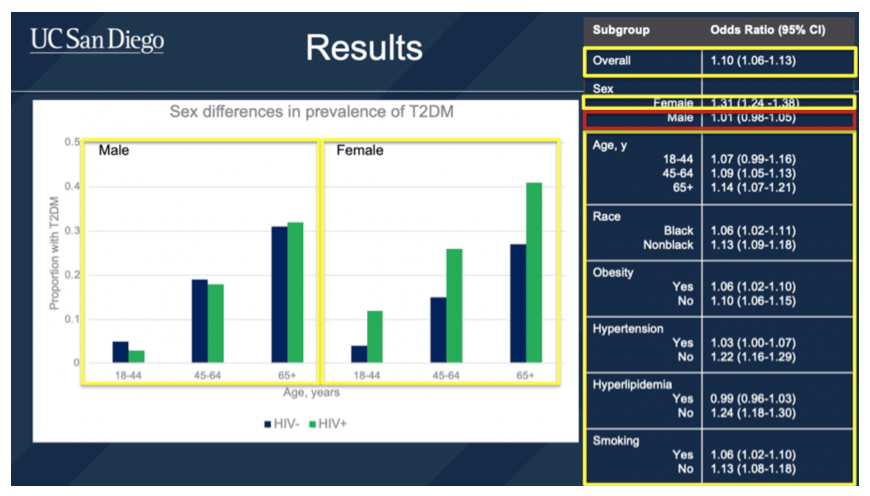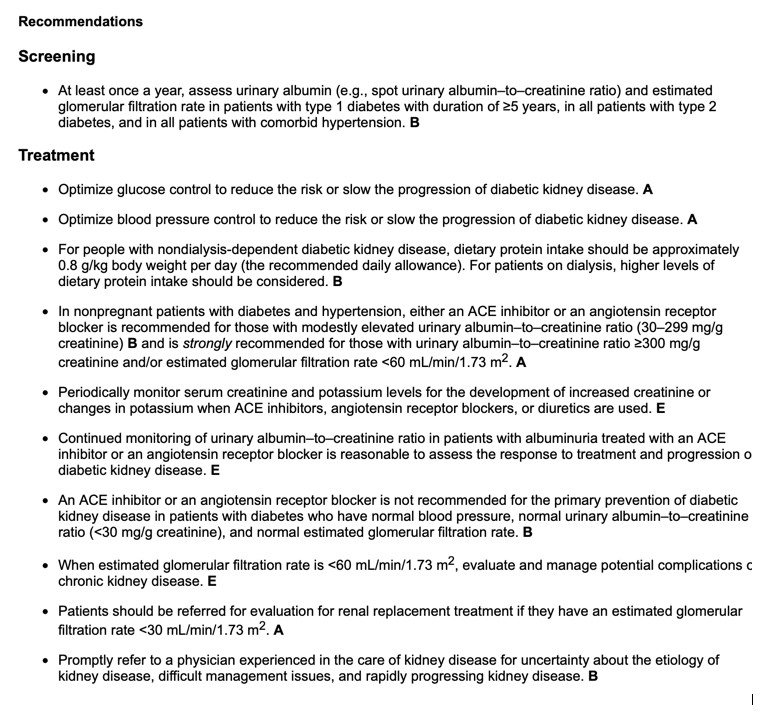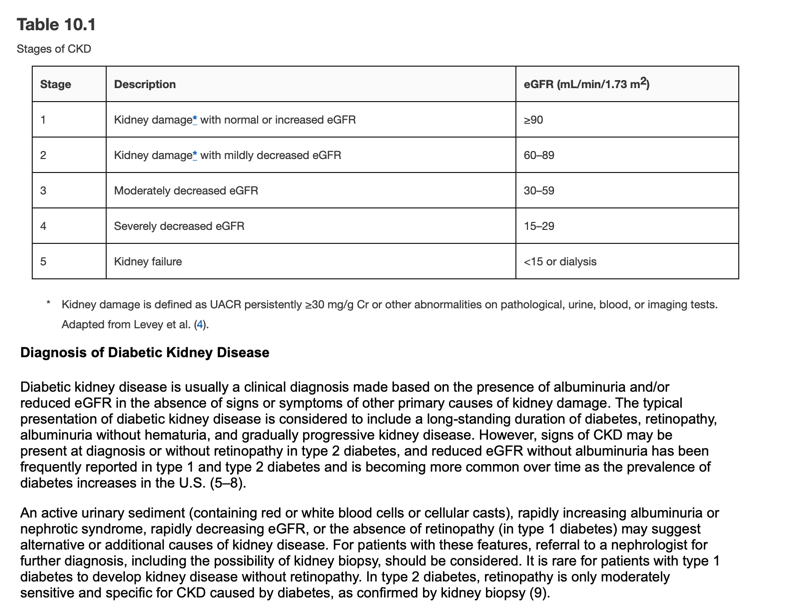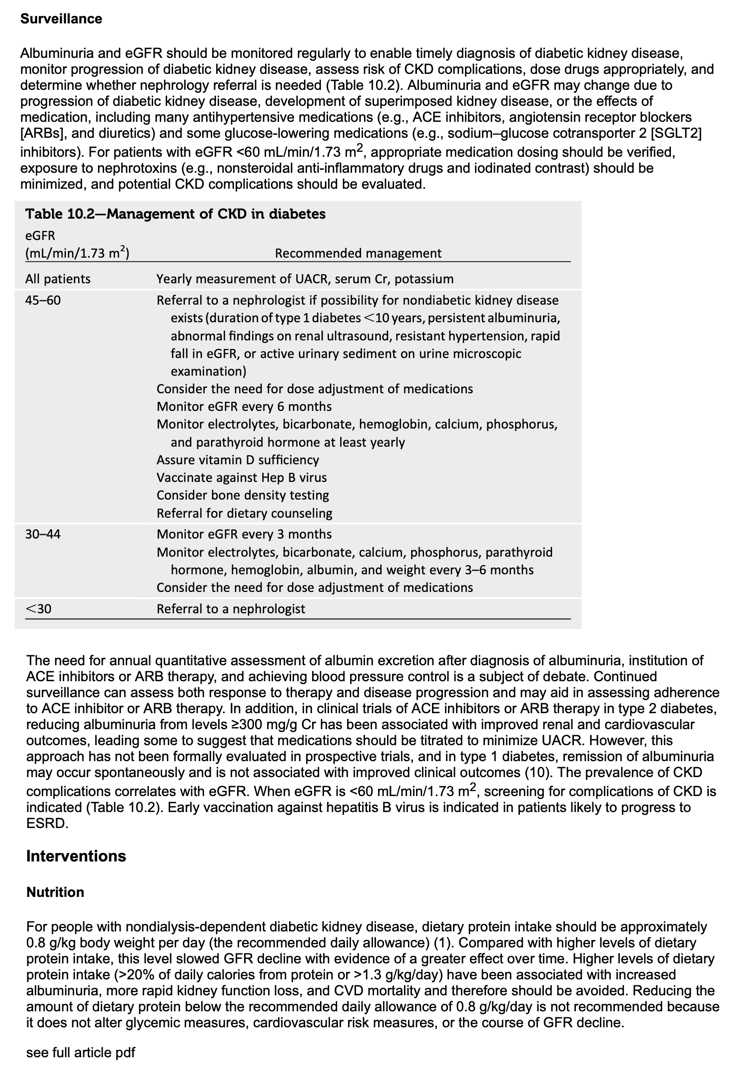| |
Diabetic Kidney Disease, HIV, Women
|
| |
| |
Download the PDF here
Older Women With HIV Have Higher Risk for Diabetes, and control-mgt is a problem

DIABETIC KIDNEY DISEASE

Assessment of Albuminuria and Estimated Glomerular Filtration Rate
Chronic kidney disease (CKD) is diagnosed by the presence of elevated urinary albumin excretion (albuminuria), low estimated glomerular filtration rate (eGFR), or other manifestations of kidney damage (1,2). Diabetic kidney disease, or CKD attributed to diabetes, occurs in 20-40% of patients with diabetes and is the leading cause of end-stage renal disease (ESRD) (1). Diabetic kidney disease typically develops after a diabetes duration of 10 years, or at least 5 years in type 1 diabetes, but may be present at diagnosis of type 2 diabetes.
Screening for albuminuria can be most easily performed by urinary albumin-to-creatinine ratio (UACR) in a random spot urine collection (1,2). Timed or 24-h collections are more burdensome and add little to prediction or accuracy. Measurement of a spot urine sample for albumin alone (whether by immunoassay or by using a sensitive dipstick test specific for albuminuria) without simultaneously measuring urine creatinine (Cr) is less expensive but susceptible to false-negative and false-positive determinations as a result of variation in urine concentration due to hydration.
Normal UACR is generally defined as <30 mg/g Cr, and increased urinary albumin excretion is defined as ≥30 mg/g Cr. However, UACR is a continuous measurement, and differences within the normal and abnormal ranges are associated with renal and cardiovascular outcomes. Furthermore, because of biological variability in urinary albumin excretion, two of three specimens of UACR collected within a 3- to 6-month period should be abnormal before considering a patient to have albuminuria. Exercise within 24 h, infection, fever, congestive heart failure, marked hyperglycemia, menstruation, and marked hypertension may elevate UACR independently of kidney damage.
eGFR should be calculated from serum Cr using a validated formula. The Chronic Kidney Disease Epidemiology Collaboration (CKD-EPI) equation is generally preferred (2). eGFR is routinely reported by laboratories with serum Cr, and eGFR calculators are available from http://www.nkdep.nih.gov. An eGFR <60 mL/min/1.73 m2 is generally considered abnormal, though optimal thresholds for clinical diagnosis are debated (3).
Urinary albumin excretion and eGFR each vary within people over time, and abnormal results should be confirmed to stage CKD (1,2). Since 2003, stage 1-2 CKD has been defined by evidence of kidney damage (usually albuminuria) with eGFR ≥60 mL/min/1.73 m2, while stages 3-5 CKD have been defined by progressively lower ranges of eGFR (4) (Table 10.1). More recently, Kidney Disease: Improving Global Outcomes (KDIGO) recommended a more comprehensive CKD staging that incorporates albuminuria and is more closely associated with risks of cardiovascular disease (CVD) and CKD progression (2). It has not been determined whether application of the more complex system aids clinical care or improves health outcomes.


|
|
| |
| |
|
|
|